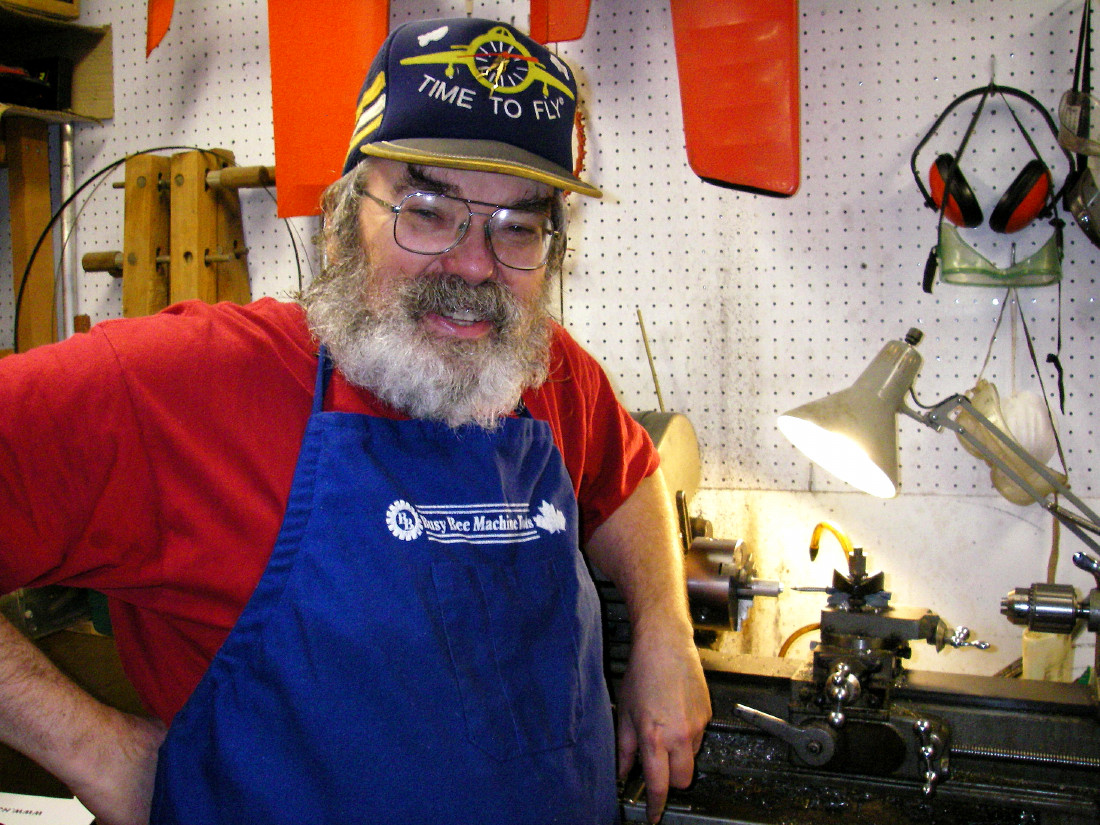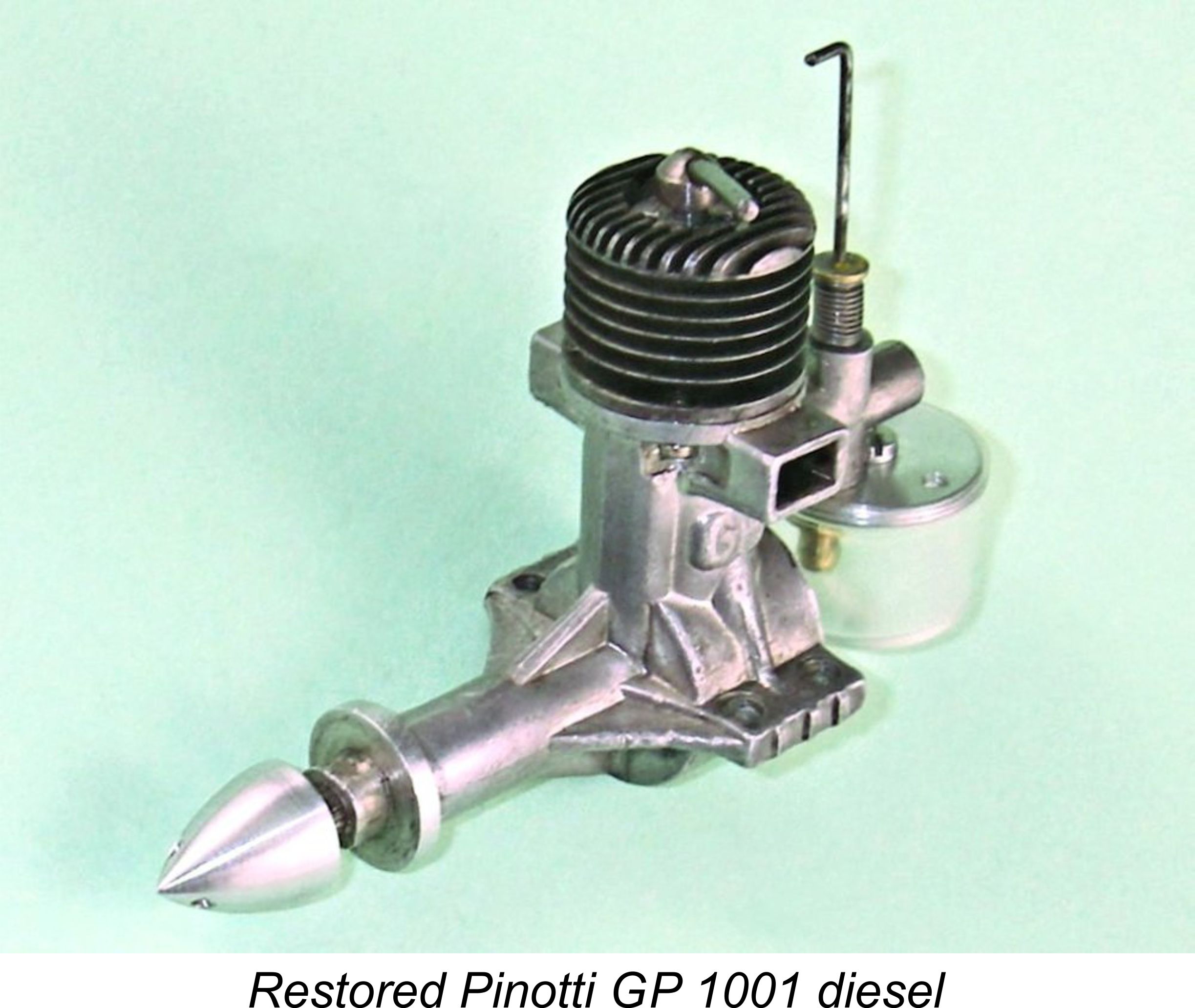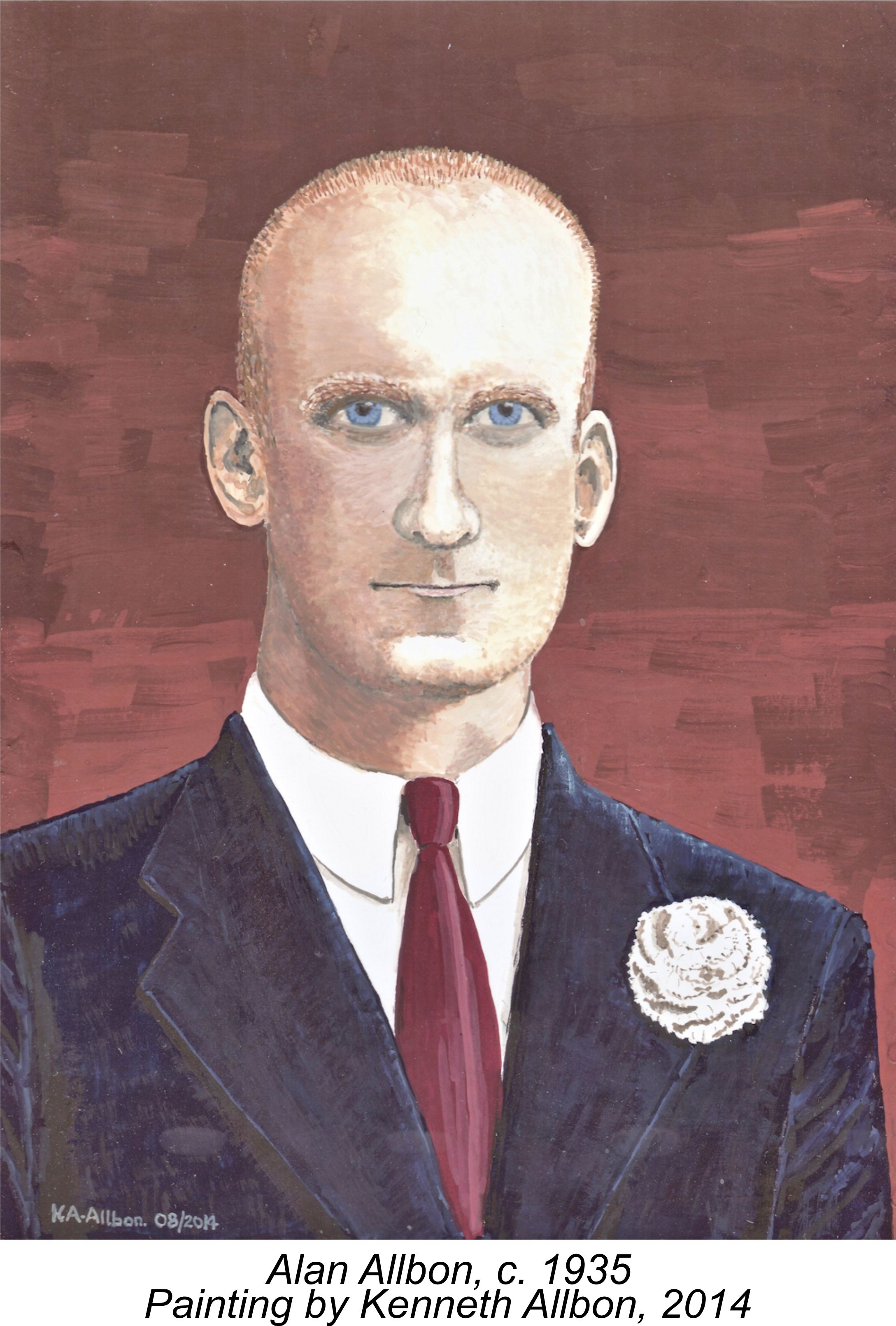
|
|
From the Editor - March 1st, 2015
Of course, the collection and restoration of classic model engines has no off-season - it's business as usual there! The same goes for the ever-curious model engine historian - new subjects keep jumping out of the woods, while old topics demand renewed attention. No peace for the wicked, they say ................ In that regard, a recent addition to my already-bloated collection was a nice example of a very rare engine from Sweden - the GP 1001 diesel of 1 cc displacement that was manufactured by Italian-born Swedish resident Giancarlo Pinotti in 1949-1950. Only about As always when I aquire an engine about which little has been written, in the English language at least, I was keen to learn more about the background to this engine's manufacture. With the help of Lars, Kjell, Ulf Carlén and others, I was able to piece together the Pinotti story, which turned out (as usual) to be far more interesting than I had expected. A complete article on the Pinotti engines will appear on this web-site in due course. I'm continuing to learn about this (to me) very new business of maintaining and updating a web-site. It's been a challenge, but I'm still making progress. My latest accomplishment is to figure out how to incorporate direct links into the announcements of new articles in these Editorials or references to other subjects in my various articles. Now instead of going through the appropriate button on the toolbar to access referenced topics, you just have to click on the red-lined link in the text that you're reading, and you're there! Hope you find this useful. The articles will of course remain accessible through the tool-bar as well.
You'll also find an updated article covering the full start-to-finish story of the Davies-Charlton model engine range. Long-time readers of Ron Chernich's "Model Engine News" (MEN) web-site will recall that my original article on this subject appeared there in 2010. Since that time, a great deal of new and in some cases revisionist information has come to light, the recent contact with the sons of Alan Allbon being just one such example. This new information has forced a re-consideration and in some cases a revision of previous conclusions, necessitating the publication of an updated article. Since the opportunity to do this on the now-frozen MEN site no longer exists, I was forced to present the extensively-revised article here. Next month's issue (due out on April 1st) will see another example of the same thing - the re-publication of an article which appeared originally on MEN. This will be the story
Returning now to the present issue, you'll also find a new article under the "TECHNICAL TOPICS" heading on the subject of model engine power output measurement. Anyone who has ever wondered how much power his engine is developing need wonder no more! Establishing the performance characteristics of your engine is a perfectly straightforward matter, as this article will hopefully explain. I continue to chip away at the "GALLERY", "SOURCES" and "PUBLICATIONS" areas of the site as time and inspiration permit. However, these areas will remain a lower priority for me than the ongoing publication of the main articles themselves. As I have repeatedly stated in the past, the publication of such articles will inevitably drop off to the one-article-per-month pace which is the best that I can sustain over the long haul. Indeed, there may be months in the future during which other time pressures do not permit me to publish even one new article. In such cases, please bear with me - I'm doing the best that I can! Thankfully, a number of readers have volunteered to write articles for inclusion on this site. This kind of assistance will do much to keep the site growing at a faster pace than I could possibly manage on my own. Such contributions from other will always be welcome here, as will suggestions for future topics.
To finish up this month's Editorial, I have to touch on a quite different matter which probably bothers more people than are willing to admit My goal in developing these articles is to set it all down so that no future researcher has to go through what I go through to discover what there is to learn about the topics covered. Indeed, the passage of time has resulted in the increasingly rapid closure of the window of opportunity for the assembly of complete information, given the rate at which the pioneers are now leaving us. If someone doesn't do it now, it probably won't get done at all. So my articles contain just the required number of words to set down all of the available information in a clear and readable fashion. I apologise to any others who may feel that the resulting articles are too wordy, but their length is dictated by the amount of information that I feel warrants saving for posterity, not by my personal preferences. I sincerely wish that it was possible to write shorter articles while still accomplishing my objectives - think of the time I'd save! Against that, think of the information that I'd have to omit ............. I would remind all readers that no-one is required to read any or all of these articles - if they're too long, just glance through them and pick out any bits which interest you! Or ignore them completely ..... your choice! I make no apologies for the fact that they contain as complete information on the topics covered as I'm able to assemble - the number of words required is strictly a function of the level of information that I'm able to unearth. Sometimes that's considerable......... It's up to readers to decide which bits (if any!) are of interest to them. At least the information is all there to be read by anyone who is interested! If you just want a snapshot, go to the Gallery! Thats why it's there ............ In summary, to present only partial coverage of a topic is a complete waste of my time as far as I'm concerned. Why would I tell only half of the Jan David-Andersen or Alan Allbon stories, for example? If I had to self-censor the scope of coverage presented in these articles, I'd soon find other activities to occupy my time! So I plan to continue as in the past to present articles whch cover their topics in as much detail as available. Apologies to anyone else who is upset by this, but it's the only way that I know to present this kind of history. In my book, if you can't find time to peruse this material even in part, then your passion for the history of these old classics doesn't match mine ............. End of rant.............!! I think that's all for this month. Until next time, keep on enjoyng these wonderful little mechanical creations that we all love so much! Adrian Duncan Coquitlam, BC, Canada
|
| |
 Wow, March already! Those of you in the Southern Hemisphere are hopefully looking back upon an enjoyable summer flying season and are planning your workshop projects as winter approaches, while for we Northerners it's time to be thinking about what we plan to be flying in 2015 and getting those cantankerous classic model engines ready to do what they were designed to do - fly model aircraft!
Wow, March already! Those of you in the Southern Hemisphere are hopefully looking back upon an enjoyable summer flying season and are planning your workshop projects as winter approaches, while for we Northerners it's time to be thinking about what we plan to be flying in 2015 and getting those cantankerous classic model engines ready to do what they were designed to do - fly model aircraft!  100 examples of this very rare engine were made in total. This being the case, I was extremely fortunate to acquire this example, only being enabled to do so thanks to the valued assistance of my good friend Lars Gustafsson. Lars was also kind to enough to enlist the much-appreciated help of master craftsman Kjell Lindqvist in the recreation of several missing parts.
100 examples of this very rare engine were made in total. This being the case, I was extremely fortunate to acquire this example, only being enabled to do so thanks to the valued assistance of my good friend Lars Gustafsson. Lars was also kind to enough to enlist the much-appreciated help of master craftsman Kjell Lindqvist in the recreation of several missing parts.  Returning now to the present, this issue will see me more or less completely caught up with the backlog of new articles which had accumulated during the lengthy period following the untimely death of my mate Ron Chernich during which I had nowhere to publish my ongoing work. The last major such piece appears in this issue - the full story of the life and work of
Returning now to the present, this issue will see me more or less completely caught up with the backlog of new articles which had accumulated during the lengthy period following the untimely death of my mate Ron Chernich during which I had nowhere to publish my ongoing work. The last major such piece appears in this issue - the full story of the life and work of  of the early FROG "bicycle-spoke" engines, about which a great deal more information has become available since the publication of the original article on MEN in March 2008. Once again, this new information has greatly enhanced our understanding of the history of these pioneering engines as well as forcing some revision of earlier conclusions. The only remedy is the re-publication of the entire article on this site.
of the early FROG "bicycle-spoke" engines, about which a great deal more information has become available since the publication of the original article on MEN in March 2008. Once again, this new information has greatly enhanced our understanding of the history of these pioneering engines as well as forcing some revision of earlier conclusions. The only remedy is the re-publication of the entire article on this site.  I also plan to present an all-new article on the history of Dunham Engineering, one of Britain's premier manufacturers of classic and replica model engines during the 1980's. Dunham are perhaps best remembered for their Orwick replicas like that illustrated here, but those were by no means their only models. It's a very interesting story which I'm sure you'll enjoy!
I also plan to present an all-new article on the history of Dunham Engineering, one of Britain's premier manufacturers of classic and replica model engines during the 1980's. Dunham are perhaps best remembered for their Orwick replicas like that illustrated here, but those were by no means their only models. It's a very interesting story which I'm sure you'll enjoy!  I was greatly heartened to hear recently from British reader Dave Causer regarding his reading of my article on
I was greatly heartened to hear recently from British reader Dave Causer regarding his reading of my article on  it! This is the issue of the sheer length and level of detail detail embodied in the material which appears on this web-site. I was greatly taken aback recently to have a long-time associate and hitherto supporter who has helped me greatly in the past disassociate himself both from the site and from me personally, stating that my articles contain "too many words". On the not-unreasonable assumption that others may feel likewise, I think it's best to confront this issue for the record right here and now once and for all.
it! This is the issue of the sheer length and level of detail detail embodied in the material which appears on this web-site. I was greatly taken aback recently to have a long-time associate and hitherto supporter who has helped me greatly in the past disassociate himself both from the site and from me personally, stating that my articles contain "too many words". On the not-unreasonable assumption that others may feel likewise, I think it's best to confront this issue for the record right here and now once and for all.